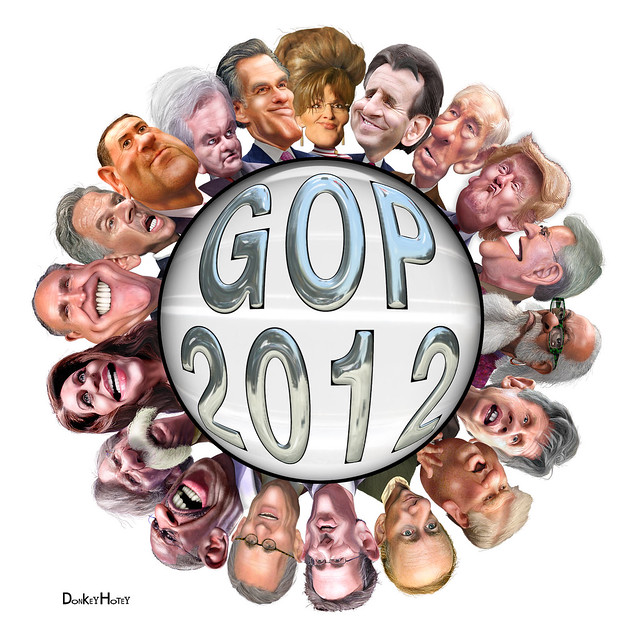Bob Dole and Jack Kemp 1996 Race
A Young Jack Kemp with Ronald Reagan 1967
There were two big ideas that changed the world in the 1980s: Supply-side economics and a bold strategy for winning the Cold War. One was the handiwork of Jack Kemp, the other of Ronald Reagan.
It’s important to understand that the first, introduced into American politics by a then-young Kemp in the 1970s, preceded the second. No look back on the life of Jack Kemp is complete without the recognition that, without Kemp’s success, the Reagan-led peaceful victory in the Cold War could never have happened.
Restoration of strong economic growth while ending double-digit inflation was a vital political and psychological building block to Reagan’s optimistic, pro-active strategy in the Cold War. It facilitated a massive defense buildup while generating the domestic political strength that Reagan needed during the confrontational phase of his foreign policy in the early and mid-1980s.
As the magnitude of the Reagan economic expansion became clear, it revived the worldwide charisma of capitalism from its low point in the 1970s. This unexpected resurrection of capitalism demoralized the global left. It also paved the way for Mikhail Gorbachev’s conciliatory foreign and domestic policy and his announcement in 1988, Reagan’s final year in office, that the Soviet Union would carry out a complete unilateral withdrawal from Afghanistan. Nobody predicted it at the time, but this was the critical first step in ending the Cold War and in the unraveling of the Soviet empire which quickly followed.
If Reagan had not adopted Kemp’s economic program as his own, he almost certainly would not have been elected president in the first place. More than any other factor, Jack Kemp’s agenda ended the fixation on disasters of the 1970s that had left the U. S. economy, American morale, and the Republican Party at historic lows.
Even today’s financial meltdown, painful and scary as it is, pales in comparison to the demoralizing decade of the 1970s. It’s hard to convey how bad the 1970s were to anyone born after 1950.
Kent State. Arab oil embargo. Stagflation. Watergate. Impeachment. Fall of Saigon. Interminable lines at gas stations. Explosion of the welfare rolls. Explosion of the rate of violent crime. Explosion of divorce, abortion, and births out of wedlock. Eurocommunism. Armed Communist takeovers of Nicaragua, Angola, Mozambique, Guinea-Bissau, Granada, Laos and Cambodia, as well as South Vietnam. The Red Army invasion of Afghanistan. The fall of the Shah of Iran and the subsequent imprisonment of more than 100 American foreign service officers to be publicly humiliated, every day, in Tehran for nearly 15 months.
Have I left anything out? Yes. For four years we had a president, Jimmy Carter, who presided over flop after flop, fiasco after fiasco, never showing the slightest awareness of personal accountability or the slightest alteration in a demeanor of smug, superior self-congratulation.
Because of the collapse of the Nixon administration, Republicans blamed themselves for all this. So did the vast majority of voters. Following the 1974 elections, the Republican Party had 144 representatives, 38 senators, and 12 governors. Here is the list of states that Republicans still ran in 1975, in the sense of possessing the governorship and both houses of the legislature: Kansas. Two years later, Carter completed the dismantling of the GOP by ousting Gerald Ford from the White House, while the colossal post-1974 Democratic dominance in Congress and the states stayed roughly the same.
Think the Republican Party is in bad shape today? You should have seen it then. In the wake of stagflation, Watergate, and America’s first lost war—all either starting or ending in ignominy in the Nixon-Ford years — early GOP recovery was far from a betting favorite.
It happened because of two men, Ronald Reagan and Jack Kemp. It is because of them — their leadership, their determination, their creativity — that for Republicans, the bleak 1970s turned out to be in a deep sense the best of times,
exceeded in their ultimate positive impact only by the founding of the party and the rise of Abraham Lincoln in the 1850s. I had the good fortune to work closely with both of these extraordinary men in this, their most politically creative period.
To say we now know all about Ronald Reagan is tempting, but as yet far from accurate. Although virtually no one realized it at the time — I count myself among the ignorant — in retrospect Reagan had nearly unerring political and policy judgment, yet zero desire — perhaps minus desire — to call attention to his own shrewdness. He was accused of living in a Hollywood-inspired dream world, and maybe he did. But the more we learn of him from the release of his notebooks and private papers, the more we sense that Reagan was a deeply intuitive politician who knew how to mold reality until it resembled his dreams.
Like the Hollywood movies of the 1940s, every one of Ronald Reagan’s dreams had a happy ending for America. Jack Kemp, a native of Southern California, was a star quarterback for the Buffalo Bills of the American Football League who retired after the 1969 season to run for Congress as a Republican from the blue-collar Buffalo suburbs. He upset an incumbent Democratic congressman in 1970 at the age of 35 and was easily re-elected until he vacated his seat to run for President in 1988. Defeated for the nomination, he served as Secretary of Housing and Urban Development under President George H. W. Bush from 1989 to 1993 and was the Republican Party nominee for Vice President, running unsuccessfully with Republican presidential candidate Bob Dole against President Bill Clinton in 1996.
But this thumbnail biography, impressive as it is, gives the merest hint of the impact Kemp had on his party, his country, and the world. He achieved by far the most positive impact on global economic policy of any legislator of the past century.
From his earliest days in the House of Representatives, Kemp asked penetrating questions to knowledgeable people about all sorts of issues. His interests ranged widely across foreign policy and social issues as well as economics. But as with many men and women who entered politics in the 1970s, he found himself drawn inexorably to the crisis of stagflation and monetary breakdown that overshadowed those times.
Pessimism about the free market was pervasive. In 1971, Kemp’s first year in Congress, a center-right Republican president, Richard Nixon, severed the post-World War II link of the dollar to gold, imposed wage and price controls on the economy, and proclaimed “We are all Keynesians now.” The Club of Rome issued a widely celebrated report predicting a dim global future of shrinking natural resources and limits to growth.
Kemp’s rise from working-class origins to football fame and a seat in Congress left him with a far different view of America’s economic potential. It undoubtedly helped that, like Reagan, he radiated the self-confidence of a high achiever from outside politics at a time when conventional politics had become sterile.
The backbencher from Buffalo found himself drawn to a small contrarian band of economists, journalists, and political activists. It was a group that was often at each other’s throats but was united by a desire to break free from the pessimism that pervaded conventional economics throughout the 1970s.
The late conservative Keynesian economist Herbert Stein, who had chaired Nixon’s Council of Economic Advisors and whose son is the writer and comedian Ben Stein, gave us the sobriquet “supply siders,” to distinguish us from the “demand side” views of both Keynesians and monetarists. It was not meant to be flattering, but we accepted the label anyway as a reasonable capsule of what was different about our views.
Kemp was the undisputed quarterback but proved willing on occasion to switch to the role of referee when that was needed. It often was.
From early on, supply siders focused on the need for tax cuts. An early package of Kemp tax proposals focused on multiple credits and deductions for capital investment.
But in 1976 Kemp decided to simplify things by offering an across-the-board 30 percent reduction in income tax rates. The new bill was written to mimic the Kennedy tax cut that passed and was signed into law by President Johnson in 1964 and became fully effective a few months later on New Year’s Day of 1965. Most congressional Republicans, including 1964 presidential nominee Barry Goldwater, had charged fiscal irresponsibility and opposed the tax cut, which was followed by several years of accelerated growth and higher-than-expected Federal revenues.
In 1977, the Kemp bill became Kemp-Roth by gaining the co-sponsorship of Sen. William Roth of Delaware, a member of the Senate Finance Committee. To get Roth to sign on, Kemp agreed to stretch out implementation to three years, 10 percent a year. This reassured fiscal conservatives and broadened rank-and-file congressional backing. Kemp convinced Republican national chairman Bill Brock to make Kemp-Roth a key GOP plank in the 1978 congressional elections. A diluted version of the bill actually passed Congress in 1978, only to be vetoed by President Carter. But supply siders scored their first big legislative victory when Carter was maneuvered into signing a cut in the top capital gains tax rate from 49 to 28 percent.
The tax cut had added significance because it was the handiwork of Wisconsin Congressman William Steiger, a respected young GOP moderate who had several years of seniority on Kemp. Increasingly, Kemp-Roth appeared capable of uniting the right, center and left of the Republican Party and attracting some conservative Democratic backing as well.
Getting Reagan to make it the centerpiece of his campaign, however, was a complex process that culminated with success in 1979, but left his campaign team with multiple wounds that never fully healed on the personal level.
The resistance was never from Reagan himself. He was attracted to Kemp-Roth from the moment it was unveiled, and endorsed it often in his speeches and radio commentaries. But as the frontrunner for the 1980 nomination, Reagan had attracted a cross-section of elite Republican economic advisers, nearly all of whom thought in then-prevalent demand-side terms. This translated into their fear that a massive personal income tax cut would put too many dollars into the pockets of American taxpayers, causing these taxpayers to bid up prices, which in turn would cause a damaging spike in inflation. They were dismissive of Say’s Law, promulgated by a 19th-century French economist who argued that stimulating increased supply would of itself create a corresponding demand.
Ultimately the gridlock in Reagan’s camp was broken on the political side. Reagan’s campaign manager and chief strategist was John Sears, a canny, pragmatic veteran of the 1968 Nixon campaign and manager of Reagan’s surprisingly strong 1976 primary challenge against President Ford. Sears’ greatest fear was the possibility that Kemp, at the time 44 years old to Reagan’s 68, would enter the 1980 primaries and divert conservative votes toward a younger and more programmatic alternative, potentially costing Reagan the nomination. Sears was attracted to the supply-side agenda on substantive,
future-oriented grounds, but he probably would not have overcome elite opposition to highlighting the supply-side agenda had it been a political vehicle for anyone other than the attractive and articulate Kemp. Sears persuaded Reagan to offer Kemp a prominent role in the campaign as “economic spokesman,” and Kemp endorsed Reagan as the “oldest and wisest” of those in the 1980 race.
From then on, the alliance for supply side between the movie star and the quarterback was unbreakable, and together they accomplished a reduction in the top income tax rate from 70 percent (its level in 1980) to 28 percent in 1988. As taxpayers know, Bill Clinton and now Barack Obama have done their best to push marginal income tax rates back up to as much as 40 percent, and this battle will never truly end.But one thing did end. In the wake of the Reagan-Kemp tax revolution, the steeply progressive income tax -- once as high as 91 percent in this country and as recently as 1979 still at an amazing 98 percent in Great Britain -- a cornerstone of the worldwide economic left was no longer viable. Dynamiting of this cornerstone helped end not just Soviet-style communism, but old-fashioned confiscatory socialism as a live option in the democratic world as well.
One of the most revealing tests of a historic political leader is whether major unfulfilled elements of his or her agenda stay alive following the leader’s departure from the scene. Reagan passes this test in spades, perhaps most strikingly when one of his central goals, decentralization of the Federal welfare entitlement, was signed into law by a Democratic president in 1996, nearly eight years after the end of the Reagan era.
For Jack Kemp, a major Republican failing was political outreach to minorities, particularly black and Hispanic voters. By his advocacy of tax-favored enterprise zones and urban homesteading, and his close collaboration with such prominent minority legislators as Congressmen Robert Garcia of the South Bronx and Walter Fauntroy of the District of Columbia, Kemp was a pioneer in left-right, white-black and white-Hispanic coalition building. His strategy was not to play down conservative doctrine in the manner of a liberal Republican, but to adapt conservative beliefs to the needs of these communities. At a time when minorities are a growing share of the national vote and the Republican share of this vote more dismal than ever, either Republicans will find a way to revive Kemp-style conservative outreach or resign themselves once again to their own version of minority status.
Even today’s financial crisis, on one level an undeniable threat to the revitalization of capitalism that the political achievements of Reagan, Kemp, and Margaret Thatcher made possible, is a vindication of Kemp and the supply siders of the 1970s. It is sometimes forgotten that the origin of supply-side economics was intertwined not with tax policy, but with the 1971 breakdown of the Bretton Woods monetary system which provided a residual link of the dollar to gold. It was the double-digit inflation that ignited in the wake of the Nixon administration’s “liberation” of the dollar that pushed millions of middle-class taxpayers into marginal tax brackets never designed for them. This in turn helped create the mass base of the tax revolution that took off in the late 1970s.
The most important article about early supply-side theory appeared in Irving Kristol’s Public Interest magazine in 1975. Written by Wall Street Journal editorial writer Jude Wanniski, it was titled “The Mundell-Laffer Hypothesis.”
I remember avidly reading it as a frazzled director of research at Reagan’s exploratory campaign committee in Washington, preparing issue papers for the1976 nomination fight. The article was almost exclusively about monetary policy, most immediately the dangers of fiat money in the newly created “dollar standard.” Columbia professor Robert Mundell, along with Arthur Laffer the academic godfather of the supply side, won the Nobel Prize for Economics in 1999 not for fiscal studies but for his groundbreaking work in monetary policy.
A long-time advocate of fixed currency exchange rates, the Canadian Mundell is today widely credited as the prime architect of the Euro and as a major behind-the-scenes adviser to the top economic policymakers of the People’s Republic of China. It seems logical to wonder if it is an accident that this increasingly important nation in today’s global economy, holding in Beijing dollar-denominated debt instruments in the amount of two trillion dollars as their national monetary reserve, has consistently opposed floating exchange rates and recently singled out for blame the distorting role of the dollar — a single nation’s debt — as the world’s official reserve currency.
Regardless of where this interesting new debate leads, it is patently absurd to allow Barack Obama and Lawrence Summers to treat a pure crisis of monetary policy centered in the liquidity of the global banking system as a repudiation of (take your pick) modern capitalism, American-style entrepreneurship, or of private American medicine. Jack Kemp, who lost his courageous battle with cancer amid all the prayers of his many friends, fellow agitators, and admirers, could have told you that in 1977.
By: Jeffrey Bell, a visiting fellow at the Ethics and Public Policy Center in Washington, was national campaign coordinator of Kemp for President in 1988.
Source: Newsmax
Posted: Knowledge Creates Power






















No comments:
Post a Comment